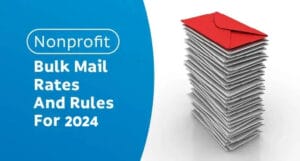Take a look at your audience
Before you begin creating your direct mail sales copy, let’s take a look at you first, and then at your audience. Who are you and your ideal customers, and what are they looking for in you and your product?
The Trust Factor is something we take into consideration in our relationships with other people all the time. Whether it involves romantic relationships or professionals that we entrust for intimate issues, the trust is crucial.
But the Trust Factor is something that we have to consider when we look at sales too! Keeping trust in mind when it comes to sales helps us build long-term relationships with our consumers.
Discuss about Direct Mail Sales Copy
Before you begin creating your direct mail sales copy, let’s take a look at you first, and then at your audience. Who are you and your ideal customers, and what are they looking for in you and your product? Let’s begin by examining these questions:
Who are You?
1) What are you selling? Define your offer in terms of the features your product has. Really focusing on this will help you formulate a marketing strategy that highlights the usefulness of the product to targeted consumers. Make sure that you are portraying your product realistically.
2) Why should they trust you? What makes you an expert in your field? What qualifications entitle you as a professional? What accomplishments do you have that can speak for themselves? Give them at least three reasons – such as, how affordable, reliable and easy-to-use is your service?
A key part of earning your client’s trust comes with recommendations from other people. Having a way for your clients to read reviews about your service will make a big difference in how easily people will trust you and your product.
3) What is the goal of your hard copy? What are you trying to accomplish with your copy? Make a strong impression or simply get a response from interested prospective customers? Draw a clear and persuasive action path you want them to take. Depending on the goal of your campaign, you can craft a copy that generates leads or orders.
Who are They?
4) Who are your ideal buyers? How old are they, what are they reading, and where do they spend their spare time? Better understand your customers, and you’ll be able to optimize their customer experience. Knowing your customers is the first principle of direct response marketing. Understanding what your customers like or dislike about your product will help you to create a message that will resonate better with them on an emotional level.
5) How will your product improve their lives? Now list the benefits of your product and all the outcomes your customers will hopefully experience by using your product. What can it do exactly? Is your product will help them make more money or save more time? The benefits are the very reason why a prospective customer will buy. List them carefully and include them in your copy.

6) Why should they buy from you? Will their fitness instructor offer them a healthier diet plan? Will their piano teacher help them hear the music in a way they didn’t before? Are their pizzas delivered with extra cheese topping? Is their massage guy an ayurvedic practitioner too? Is their math tutor helping them feel like integrals are a no-brainer? You get it. If the answer is no, how can you take advantages of this opportunity gap?
Think of your copy as a job interview. “Why should we hire you?” is a typical question. Treat your customers as your future boss.
7) Who are your competitors and why are you better than they are. What are your strongest points? Maybe your guaranty, or your availability in weekends or safety around children? When your prospective customers compare your offer with similar ones, it should score better.
Examine what your competitors are doing better than you? That’s your space for change and improvement. For now, know your weak spots and try to compensate.
Knowing your competitor will enable you to set your price correctly, and make your product or services stand out.
8) Why would they say yes? People may have fears, concerns, and hesitations. They may have objections about features, service, shipping, and countless other things. Your job is to give them something concrete, like hard facts that can be checked or tested. Solve all major objections before closing. Make them feel good about purchasing from you.
Read Ten Reasons Why People Don’t Donate to Charity – and how can you solve their objections.
9) What actions should they take further? Call, email or visit your site? Is there a deadline? What they’ll miss if they will not respond? Fear of missing out is a powerful motivator. Showcase what they will miss: a profitable investment, a lovely event, a novel experience or an amazing opportunity.
Building the trust factor is your main priority as an advertiser. Because business development is about building strong and lasting relationships with other people.




